
Gettysburg Battlefield: A Journey Through History
Experience the historic Gettysburg Battlefield in Pennsylvania, a site that changed the course of the American Civil War, with guided tours, museums, and scenic landscapes.
Gettysburg Battlefield in Pennsylvania is a site of profound historical importance. This destination marks the location of the Battle of Gettysburg, a turning point in the American Civil War. Visitors can walk through the fields where soldiers fought and see the many monuments that honor their bravery. The battlefield is part of the Gettysburg National Military Park, which preserves the history and legacy of this pivotal event. The park offers a range of experiences for visitors. You can take a self-guided tour or join a ranger-led program to learn more about the events that took place here. The Visitor Center and Museum provide detailed exhibits, including artifacts, interactive displays, and the famous Gettysburg Cyclorama, a massive painting depicting the battle. The park also includes the Soldiers’ National Cemetery, where President Abraham Lincoln gave his famous Gettysburg Address. Beyond the battlefield, the town of Gettysburg is charming and steeped in history. You can explore antique shops, dine in historic taverns, and visit the numerous museums dedicated to the Civil War era. The scenic countryside around Gettysburg offers opportunities for hiking, biking, and even ghost tours, making it a well-rounded destination for history buffs and nature lovers alike.
Local tips in Gettysburg Battlefield
- Visit the battlefield early in the morning or late in the afternoon to avoid crowds and enjoy cooler temperatures.
- Wear comfortable walking shoes as the battlefield covers a large area with uneven terrain.
- Check the National Park Service website for scheduled ranger programs and special events during your visit.
- Allocate time to visit the Gettysburg Museum and Visitor Center for a comprehensive understanding of the battle.
- Consider taking a guided tour to gain deeper insights from knowledgeable guides.
- Explore the town of Gettysburg for additional historical sites, dining, and shopping experiences.
Gettysburg Battlefield: A Journey Through History
Gettysburg Battlefield in Pennsylvania is a site of profound historical importance. This destination marks the location of the Battle of Gettysburg, a turning point in the American Civil War. Visitors can walk through the fields where soldiers fought and see the many monuments that honor their bravery. The battlefield is part of the Gettysburg National Military Park, which preserves the history and legacy of this pivotal event. The park offers a range of experiences for visitors. You can take a self-guided tour or join a ranger-led program to learn more about the events that took place here. The Visitor Center and Museum provide detailed exhibits, including artifacts, interactive displays, and the famous Gettysburg Cyclorama, a massive painting depicting the battle. The park also includes the Soldiers’ National Cemetery, where President Abraham Lincoln gave his famous Gettysburg Address. Beyond the battlefield, the town of Gettysburg is charming and steeped in history. You can explore antique shops, dine in historic taverns, and visit the numerous museums dedicated to the Civil War era. The scenic countryside around Gettysburg offers opportunities for hiking, biking, and even ghost tours, making it a well-rounded destination for history buffs and nature lovers alike.
When is the best time to go to Gettysburg Battlefield?
Iconic landmarks you can’t miss
Gettysburg National Military Park
Explore the historic Gettysburg National Military Park, where the echoes of the Civil War resonate amidst beautiful landscapes and poignant monuments.
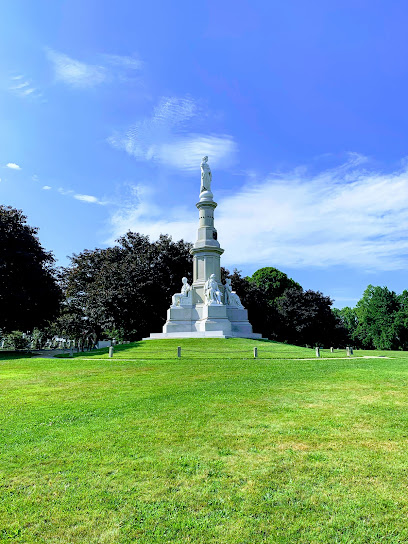
Devil's Den
Discover the historic significance and natural beauty of Devil's Den, a key site in the Battle of Gettysburg, Pennsylvania.

Little Round Top
Discover the historic Little Round Top, a cornerstone of the Gettysburg National Military Park, where valor and beauty collide in a poignant landscape.

State of Pennsylvania Monument
Explore the State of Pennsylvania Monument: a tribute to bravery and history in Gettysburg, PA within the iconic National Military Park.

Sachs Covered Bridge
Explore the historic Sachs Covered Bridge in Gettysburg, PA - a charming landmark with stunning views and a rich Civil War history.
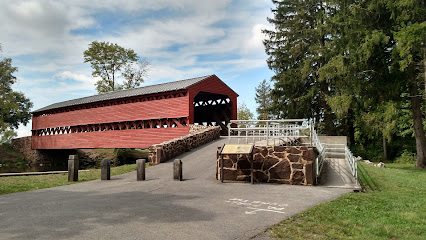
Eternal Light Peace Memorial
Discover the Eternal Light Peace Memorial in Gettysburg, a poignant tribute to sacrifice and a powerful symbol of hope for peace and unity.

Jennie Wade House
Discover the poignant history of the Jennie Wade House, a must-visit historical landmark in Gettysburg, Pennsylvania, capturing civilian life during the Civil War.

Gettysburg Ghost Tours
Explore the ghostly legends of Gettysburg with captivating ghost tours that combine history and the supernatural in an unforgettable experience.

Eisenhower National Historic Site
Explore the Eisenhower National Historic Site, a captivating museum showcasing the life of President Dwight D. Eisenhower amidst Gettysburg's picturesque landscapes.

Gettysburg Museum of History
Discover the captivating stories of the American Civil War at Gettysburg Museum of History, where history comes alive with every exhibit and artifact.

Gettysburg Heritage Center
Discover the rich history of the Civil War at the Gettysburg Heritage Center, where engaging exhibits and educational tours bring the past to life.
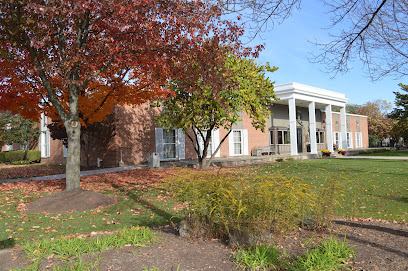
Gettysburg Diorama
Discover the Gettysburg Diorama, a stunning representation of the Battle of Gettysburg, offering an educational journey through pivotal American history.

Land of Little Horses
Experience the magic of miniature horses and thrilling attractions at the Land of Little Horses, a must-visit theme park in Gettysburg, PA.

Shriver House Museum
Discover the intimate history of the Shriver family and the impact of the Civil War at the iconic Shriver House Museum in Gettysburg.

Gettysburg Tour Center
Discover the profound history of Gettysburg at the Tour Center, your gateway to exploring one of America's most significant Civil War battlefields.

Unmissable attractions to see
Gettysburg National Military Park Museum & Visitor Center
Immerse yourself in the profound history of the Civil War at Gettysburg National Military Park Museum & Visitor Center, a must-visit for every history enthusiast.

Gettysburg National Military Park
Discover the rich history and serene beauty of Gettysburg National Military Park, a site of immense significance in American history.

Devil's Den
Explore the historic battleground of Devil's Den in Gettysburg, where dramatic rock formations meet pivotal moments in American history.
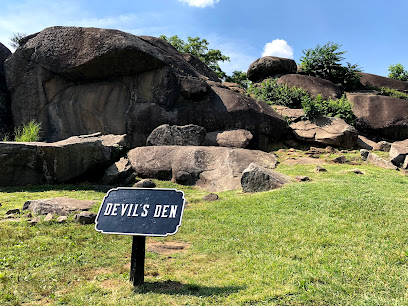
Little Round Top
Discover Little Round Top, a historic landmark in Gettysburg, where bravery shaped the course of American history amidst breathtaking natural beauty.

State of Pennsylvania Monument
Explore the State of Pennsylvania Monument in Gettysburg, a stunning tribute to Civil War heroes with breathtaking views and rich history.

Sachs Covered Bridge
Explore the enchanting Sachs Covered Bridge in Gettysburg, a historical landmark that combines stunning architecture with rich Civil War history.

Central Market House
Discover the flavors and culture of York, PA at Central Market House, a vibrant farmers' market offering fresh produce and local artisanal goods.
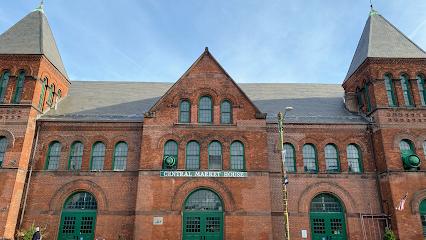
Eternal Light Peace Memorial
Explore the Eternal Light Peace Memorial in Gettysburg, a serene monument honoring the sacrifices of Civil War soldiers amidst stunning vistas.

Jennie Wade House
Explore the Jennie Wade House in Gettysburg, a poignant historical site that honors the legacy of the only civilian casualty of the Battle of Gettysburg.

Gettysburg Ghost Tours
Discover the eerie tales and ghostly encounters of Gettysburg on captivating ghost tours through this historic battlefield town.

Eisenhower National Historic Site
Explore the Eisenhower National Historic Site in Gettysburg, PA, where history and nature intertwine at the former home of President Dwight D. Eisenhower.

Gettysburg Museum of History
Explore the Gettysburg Museum of History, where the stories of America's past come alive through unique artifacts and engaging exhibits.
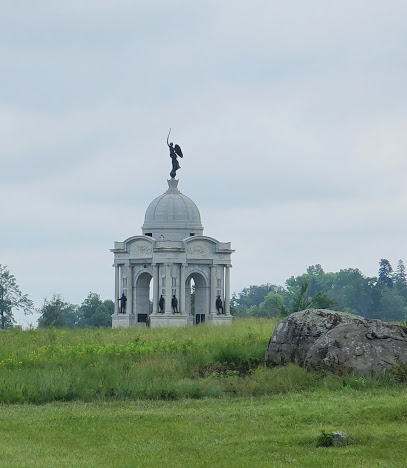
Gettysburg Heritage Center
Uncover the stories of bravery and sacrifice at the Gettysburg Heritage Center, where history comes alive through engaging exhibits and a stunning 3D experience.

Gettysburg Diorama
Discover the Gettysburg Diorama: an immersive museum experience showcasing the Battle of Gettysburg's intricacies through stunning 3D art and historical artifacts.

Land of Little Horses
Experience the magic of miniature horses at the Land of Little Horses in Gettysburg, PA, a theme park offering fun for the whole family.
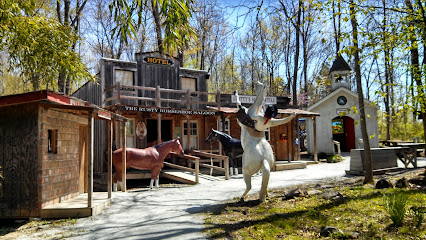
Essential places to dine
Dobbin House Tavern
Discover American cuisine with historical charm at Dobbin House Tavern in Gettysburg - where every meal tells a story.
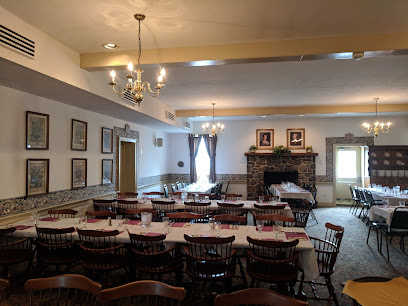
Blue & Gray Bar & Grill
Experience authentic American cuisine at Blue & Gray Bar & Grill in Gettysburg - where history meets hearty meals.

Appalachian Brewing Company of Gettysburg - Battlefield
Discover craft beers and delicious American cuisine at Appalachian Brewing Company in historic Gettysburg.

Lincoln Diner
Experience classic American breakfast at Lincoln Diner in Gettysburg – where hearty meals meet friendly service in a cozy atmosphere.

Tommy's Pizza
Savor authentic Italian flavors at Tommy's Pizza in Gettysburg—where every slice tells a story.

Gettysburg Eddie's
Discover the authentic taste of America at Gettysburg Eddie's - where history meets delicious comfort food in Gettysburg.
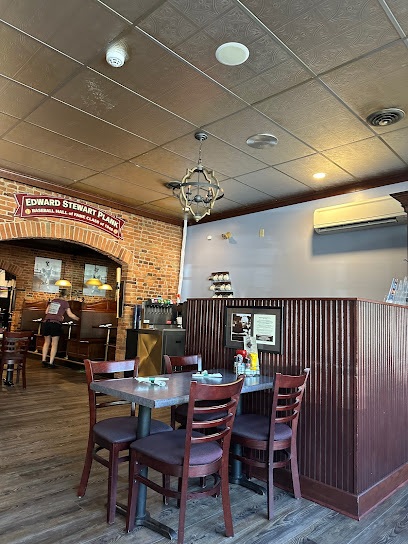
O'Rorke's Family Eatery
Discover O'Rorke's Family Eatery: A charming pub in Gettysburg serving delicious American and Irish cuisine in a warm atmosphere.

La Bella Italia
Experience authentic Italian cuisine at La Bella Italia in Gettysburg - where tradition meets taste in every delicious bite.

The Gettysburger Company
Experience iconic American burgers at The Gettysburger Company in historic Gettysburg—where flavor meets tradition!
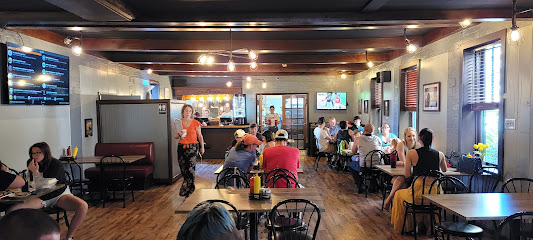
Gettysburg Family Restaurant
Experience classic American comfort food at Gettysburg Family Restaurant - where families gather for hearty meals in a warm atmosphere.

Friendly's
Experience classic American dining at Friendly's in Gettysburg – where delicious meals meet delightful ice cream treats for the whole family.

The Pub & Restaurant
Experience authentic American cuisine at The Pub & Restaurant in Gettysburg – where history meets hearty flavors.

Fourscore Beer Co.
Discover unique craft beers and delicious food at Fourscore Beer Co., your premier brewpub destination in historic Gettysburg.

Food 101
Experience delightful American cuisine at Food 101 in Gettysburg - where local flavors meet warm hospitality.

Mason Dixon Distillery
Experience the best of American cuisine and craft distilling at Mason Dixon Distillery in Gettysburg - where flavor meets history.

Markets, malls and hidden boutiques
Sweeet! THE Candy Store in Gettysburg, PA!
Indulge your sweet tooth at Sweeet! THE Candy Store in Gettysburg, PA, where delightful confections and whimsical treats await every visitor.

Nerd Herd Gifts and Games
Explore an extensive collection of games at Nerd Herd Gifts and Games in Gettysburg, where every visit promises fun and discovery for all ages.

The Horse Soldier
Explore The Horse Soldier in Gettysburg, a premier antique store with a rich collection of military artifacts and historical treasures.

A & A Village Treasures
Explore A & A Village Treasures in Gettysburg, a gift shop brimming with local art, handcrafted items, and unique souvenirs that reflect the spirit of the region.

The Antique Center of Gettysburg
Explore the rich history of antiques and collectibles at The Antique Center of Gettysburg, a must-visit gem in the heart of Pennsylvania.

Lark Gifts
Explore Lark Gifts in Gettysburg for unique souvenirs and local crafts that embody the spirit of this historic town.

Tommy Gilbert's Hobby Shop
Discover creativity at Tommy Gilbert's Hobby Shop, a haven for hobbyists and crafters in historic Gettysburg, PA.

Gettysburg Emporium
Explore a treasure trove of antique and handmade fashion at Gettysburg Emporium, where unique finds await every visitor.

A Lit’le Irish Too
Discover the essence of Ireland at A Lit’le Irish Too in Gettysburg, offering unique gifts, fashion accessories, and beautiful jewelry.

Gettysburg Miniature Soldiers
Discover a captivating collection of miniature soldiers in Gettysburg, where history and hobby meet in an engaging shopping experience.

Union Drummer Boy - Civil War Artifacts
Explore the Union Drummer Boy in Gettysburg, a collectibles store filled with Civil War artifacts and historical treasures.

Gettysburg Souvenirs & Gifts
Explore the charm of Gettysburg Souvenirs & Gifts, where history meets unique local treasures for every visitor.
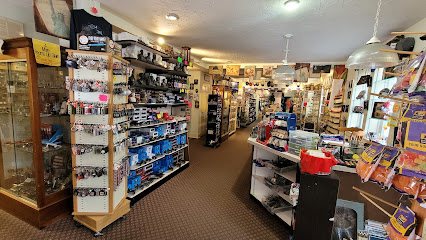
22(9) Vintage Wares
Explore a charming vintage clothing store with a unique selection of timeless apparel and accessories in historic Gettysburg, Pennsylvania.

Mr G's Gift Shop
Explore Mr G's Gift Shop in Gettysburg for unique souvenirs, local crafts, and unforgettable memorabilia that capture the essence of this historic town.

LeeBell's Mercantile
Experience the perfect blend of local craftsmanship and cozy café vibes at LeeBell's Mercantile in Gettysburg, Pennsylvania.

Essential bars & hidden hideouts
Dobbin House Tavern
Explore the historic charm and delicious American cuisine at Dobbin House Tavern in Gettysburg, where history and hospitality meet.

Blue & Gray Bar & Grill
Discover the heart of American cuisine at Blue & Gray Bar & Grill, where history and flavor meet in the charming town of Gettysburg.

Appalachian Brewing Company of Gettysburg - Battlefield
Savor craft brews and American cuisine at the Appalachian Brewing Company, a historic brewpub in Gettysburg, PA, perfect for tourists and locals alike.

Garryowen Irish Pub
Experience authentic Irish cuisine, live music, and warm hospitality at Garryowen Irish Pub in Gettysburg, Pennsylvania.

Gettysburg Eddie's
Experience the heart of American dining at Gettysburg Eddie's, where delicious food and local history blend seamlessly.

O'Rorke's Family Eatery
Experience the charm of O'Rorke's Family Eatery in Gettysburg, offering a unique blend of American and Irish cuisine in a welcoming atmosphere.

The Gettysburger Company
Discover the rich flavors of American cuisine at The Gettysburger Company, a must-visit dining spot in historic Gettysburg.

The Pub & Restaurant
Experience the vibrant atmosphere and delicious pub fare at The Pub & Restaurant in Gettysburg, where history meets hospitality.
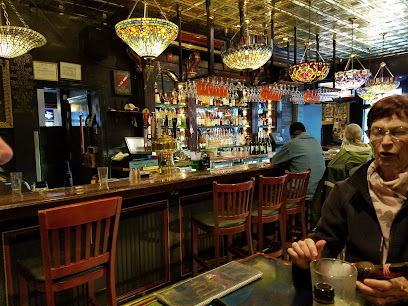
Fourscore Beer Co.
Discover the craft of brewing at Fourscore Beer Co., Gettysburg's premier brewpub featuring local flavors and a vibrant atmosphere.

Hickory Bridge Farm Restaurant ~ Bed & Breakfast
Discover the charm of Hickory Bridge Farm: a family-friendly restaurant and cozy bed & breakfast nestled in Pennsylvania's scenic countryside.

1863 Inn Of Gettysburg
Experience comfort and history at the 1863 Inn of Gettysburg, your ideal retreat in the heart of America’s most famous battlefield.

Farnsworth House Inn
Experience the rich history and warm hospitality of Farnsworth House Inn, a charming bed and breakfast in the heart of Gettysburg.

Mason Dixon Distillery
Experience the essence of Gettysburg with American cuisine, craft cocktails, and local spirits at Mason Dixon Distillery.

Quality Inn Gettysburg Battlefield
Experience the charm of Quality Inn Gettysburg Battlefield, your home away from home in the heart of American history.
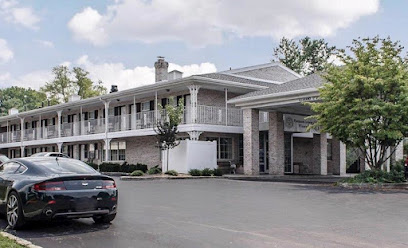
Hunt's Battlefield Fries
Indulge in delicious, freshly made fries at Hunt's Battlefield Fries in Gettysburg, a must-visit for every tourist exploring this historic town.

Local Phrases about Gettysburg Battlefield
-
- HelloHowdy
[haʊ-di] - GoodbyeSee ya later
[si jə ˈleɪ.tər] - YesYup
[jʌp] - NoNah
[nɑː] - Please/You're welcomePlease/No problem
[pliːz / noʊ ˈprɑbləm] - Thank youThanks
[θæŋks] - Excuse me/SorryPardon me/My bad
[pɑːrdn miː / maɪ bæd] - How are you?How y'all doin'?
[haʊ jɔːl ˈduɪn] - Fine. And you?Doin' well. How 'bout you?
[duɪn wɛl. haʊ baʊt jʊ] - Do you speak English?Ya speak English?
[jə spiːk ˈɪŋɡlɪʃ] - I don't understandI reckon I don't follow ya
[aɪ ˈrɛkən aɪ doʊnt ˈfɑloʊ jə]
- HelloHowdy
-
- I'd like to see the menu, pleaseI reckon I'll take a gander at the menu, if ya don't mind
[aɪ ˈrɛkən aɪl teɪk ə ˈɡændər æt ðə ˈmɛnjuː ɪf jə doʊnt maɪnd] - I don't eat meatI ain't no carnivore
[aɪ eɪnt noʊ ˈkɑrnɪvɔr] - Cheers!Bottoms up!
[ˈbɑtəmz ʌp] - I would like to pay, pleaseI reckon I'll settle up now
[aɪ ˈrɛkən aɪl ˈsɛtl ʌp naʊ]
- I'd like to see the menu, pleaseI reckon I'll take a gander at the menu, if ya don't mind
-
- Help!SOS!
[ɛs ˌoʊ ˈɛs] - Go away!Git!
[ɡɪt] - Call the Police!Ring up the Fuzz!
[rɪŋ ʌp ðə fʌz] - Call a doctor!Get a sawbones!
[ɡɛt ə ˈsɔboʊnz] - I'm lostI'm plumb lost
[aɪm plʌm lɔst] - I'm illI ain't feelin' right
[aɪ eɪnt ˈfiːlɪn raɪt]
- Help!SOS!
-
- I'd like to buy...I reckon I'll purchase...
[aɪ ˈrɛkən aɪl ˈpɜrtʃəs] - I'm just lookingI'm just browsin'
[aɪm ˈdʒʌst ˈbraʊzɪn] - How much is it?What's the damage?
[wɑːts ðə ˈdæmɪdʒ] - That's too expensiveThat's a bit steep
[ðæts ə bɪt stip] - Can you lower the price?Can ya do me a favor and drop the price?
[kæn jə duː miː ə ˈfeɪvər ænd drɑp ðə praɪs]
- I'd like to buy...I reckon I'll purchase...
-
- What time is it?What's the time, mister?
[wɑːts ðə taɪm ˈmɪstər] - It's one o'clockIt's high noon
[ɪts haɪ nun] - Half past (10)Halfway to (10)
[ˈhæfˌweɪ tuː tɛn] - MorningMornin'
[ˈmɔrnɪn] - AfternoonAfternoon
[ˌæftərˈnun] - EveningEvenin'
[ˈivnɪn] - YesterdayYest'day
[ˈjɛstˌdeɪ] - TodayToday
[təˈdeɪ] - TomorrowTomorra
[təˈmɑroʊ] - 1One
[wʌn] - 2Two
[tuː] - 3Three
[θriː] - 4Four
[fɔːr] - 5Five
[faɪv] - 6Six
[sɪks] - 7Seven
[ˈsɛvən] - 8Eight
[eɪt] - 9Nine
[naɪn] - 10Ten
[tɛn]
- What time is it?What's the time, mister?
-
- Where's a/the...?Where's the... at?
[wɛərz ðə æt] - What's the address?What's the street?
[wɑːts ðə strit] - Can you show me (on the map)?Can ya point it out (on the map)?
[kæn jə pɔɪnt ɪt aʊt ɑn ðə mæp] - When's the next (bus)?When's the next bus a-comin'?
[wɛnz ðə nɛkst bʌs ə ˈkʌmɪn] - A ticket (to ....)A ride (to ....)
[ə raɪd tuː]
- Where's a/the...?Where's the... at?
History of Gettysburg Battlefield
-
In the summer of 1863, Confederate General Robert E. Lee launched his second invasion of the Northern states. His Army of Northern Virginia crossed into Pennsylvania, aiming to threaten Northern cities, weaken the Union's resolve, and secure supplies. This movement set the stage for the Battle of Gettysburg, as Union forces under Major General George G. Meade moved to intercept Lee's army.
-
On July 1, 1863, Confederate forces engaged Union cavalry northwest of Gettysburg. As reinforcements arrived, the battle escalated, and intense fighting ensued. By the end of the day, Confederate forces had pushed Union troops through the town to Cemetery Hill, where the Union established a formidable defensive position.
-
July 2, 1863, saw fierce combat as Confederate forces attempted to outflank the Union army. Key locations such as Little Round Top, Devil's Den, the Wheatfield, and the Peach Orchard witnessed brutal fighting. Despite initial Confederate successes, Union troops held their ground, maintaining control of the high ground.
-
The climax of the Battle of Gettysburg occurred on July 3, 1863, with Pickett's Charge. Confident in breaking the Union center, General Lee ordered a massive frontal assault led by Major General George Pickett. The attack, however, was repelled with heavy Confederate casualties, marking a decisive turning point in the battle and the war.
-
The Battle of Gettysburg resulted in approximately 51,000 casualties, making it one of the bloodiest battles of the Civil War. The Union victory ended Lee's invasion of the North. In November 1863, President Abraham Lincoln delivered the Gettysburg Address at the dedication of the Soldiers' National Cemetery, reaffirming the principles of liberty and equality.
-
Established in 1895, the Gettysburg National Military Park preserves the site of the battle, encompassing over 6,000 acres. The park includes numerous monuments, markers, and preserved landscapes that offer visitors a glimpse into the past. Key sites such as Cemetery Ridge, Seminary Ridge, and the High Water Mark are integral to understanding the battle's history.
-
The Gettysburg Cyclorama is a massive 360-degree painting by Paul Philippoteaux, depicting Pickett's Charge. Unveiled in 1884, it provides an immersive visual experience of the battle's climactic moment. Located at the Gettysburg National Military Park Museum and Visitor Center, the cyclorama remains a popular attraction for visitors.
-
The Battle of Gettysburg significantly impacted the town's civilian population. Residents like Jennie Wade, the only civilian killed during the battle, and the many who aided wounded soldiers, played crucial roles. Their stories highlight the broader human experience of the conflict and the town's resilience in its aftermath.
-
Today, Gettysburg is a vibrant community that honors its historical legacy while offering modern amenities. The town features numerous museums, guided tours, and reenactments that bring the history of the battlefield to life. Visitors can explore the rich cultural heritage and enjoy the scenic beauty of the surrounding countryside.
Gettysburg Battlefield Essentials
-
Gettysburg Battlefield is located in Gettysburg, Pennsylvania, approximately 85 miles from Washington, D.C., and 55 miles from Baltimore, Maryland. The closest major airport is Harrisburg International Airport (MDT), around 45 miles away. From the airport, you can rent a car or take a shuttle service to reach Gettysburg. Alternatively, you can drive from major cities like Philadelphia, Baltimore, or Washington, D.C. Amtrak trains also run to Harrisburg, from where you can rent a car or take a bus to Gettysburg.
-
Once in Gettysburg, the battlefield and town are best explored by car. There are numerous parking areas throughout the battlefield. The Gettysburg Tour Center offers bus tours, which are a convenient way to see the main sites with insightful commentary. For a more immersive experience, consider renting a bike or taking a horseback tour. Local taxis and ride-sharing services like Uber and Lyft are also available, though less commonly used.
-
The official currency is the United States Dollar (USD). Credit and debit cards are widely accepted in hotels, restaurants, and shops in Gettysburg. ATMs are readily available throughout the town for cash withdrawals. It’s advisable to carry some cash, particularly for small purchases or in case you visit more rural areas nearby.
-
Gettysburg is generally a safe destination for tourists. Exercise standard precautions such as not leaving valuables in your car and being aware of your surroundings. While crime rates are low, it is advisable to avoid walking alone late at night in unfamiliar areas. Stick to well-lit, populated places, especially if you're not familiar with the area.
-
In case of an emergency, dial 911 for immediate assistance. There is a local police department in Gettysburg, and medical facilities are available at Gettysburg Hospital. It is recommended to have travel insurance that covers medical emergencies. For non-urgent health issues, there are several pharmacies in town where you can purchase over-the-counter medications.
-
Fashion: Do wear comfortable walking shoes, as the terrain can be uneven. Dress in layers, as weather can change quickly. Avoid overly casual attire if you're visiting more formal establishments or events. Religion: Do show respect at the Soldier's National Cemetery and other memorials; keep quiet and refrain from disruptive behavior. Public Transport: Do use the shuttle services if you prefer not to drive. Don't expect extensive public transportation options. Greetings: Do greet people with a smile and a 'hello'. Gettysburg is a friendly town, and locals appreciate politeness. Eating & Drinking: Do try local cuisine and visit historic taverns. Don't leave trash behind, especially on the battlefield grounds.
-
To experience Gettysburg like a local, consider visiting during the off-peak seasons (late fall or early spring) to avoid crowds. Take a walk down Steinwehr Avenue to explore unique shops and eateries. Engage with park rangers and historians; they often share fascinating stories and insights. Don't miss visiting the Gettysburg National Military Park Museum and Visitor Center for a comprehensive understanding of the battle. For an authentic experience, attend one of the reenactment events held throughout the year.
Trending Landmarks in Gettysburg Battlefield
-
Gettysburg National Military Park
-
Devil's Den
-
Little Round Top
-
State of Pennsylvania Monument
-
Sachs Covered Bridge
-
Eternal Light Peace Memorial
-
Jennie Wade House
-
Gettysburg Ghost Tours
-
Eisenhower National Historic Site
-
Gettysburg Museum of History
-
Gettysburg Heritage Center
-
Gettysburg Diorama
-
Land of Little Horses
-
Shriver House Museum
-
Gettysburg Tour Center
Nearby Cities to Gettysburg Battlefield
-
Things To Do in Hagerstown
-
Things To Do in Frederick
-
Things To Do in Harper's Ferry
-
Things To Do in Towson
-
Things To Do in Martinsburg
-
Things To Do in Hershey
-
Things To Do in Gaithersburg
-
Things To Do in Baltimore
-
Things To Do in Rockville
-
Things To Do in Lancaster
-
Things To Do in Laurel
-
Things To Do in Bethesda
-
Things To Do in Silver Spring
-
Things To Do in Annapolis
-
Things To Do in Reading












